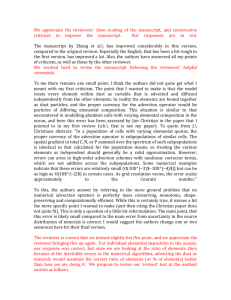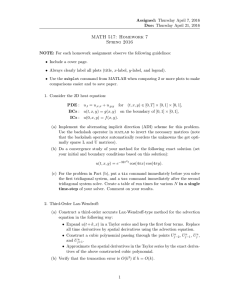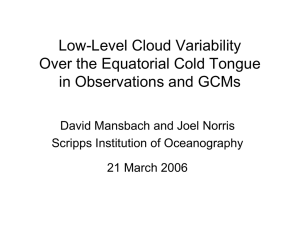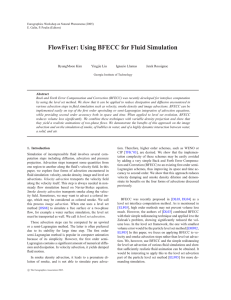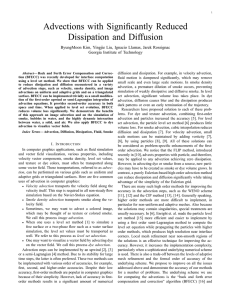Name: Score: Math 1321 Week 8 Lab Worksheet
advertisement
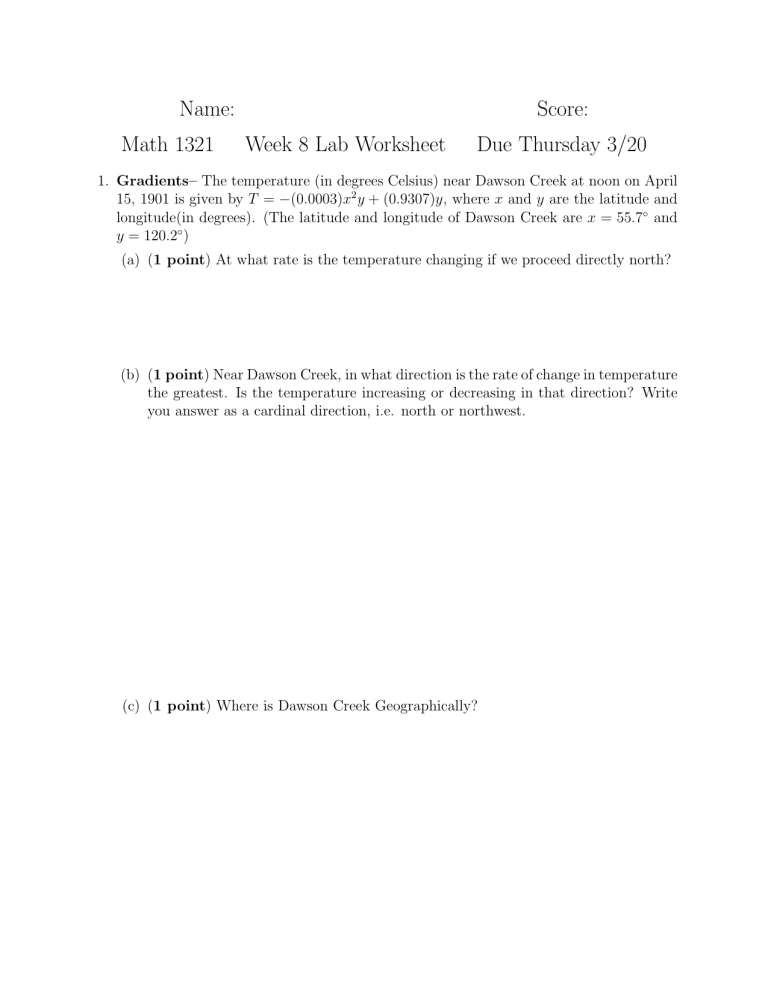
Name: Math 1321 Score: Week 8 Lab Worksheet Due Thursday 3/20 1. Gradients– The temperature (in degrees Celsius) near Dawson Creek at noon on April 15, 1901 is given by T = −(0.0003)x2 y + (0.9307)y, where x and y are the latitude and longitude(in degrees). (The latitude and longitude of Dawson Creek are x = 55.7◦ and y = 120.2◦ ) (a) (1 point) At what rate is the temperature changing if we proceed directly north? (b) (1 point) Near Dawson Creek, in what direction is the rate of change in temperature the greatest. Is the temperature increasing or decreasing in that direction? Write you answer as a cardinal direction, i.e. north or northwest. (c) (1 point) Where is Dawson Creek Geographically? 2. (Level Curves and Harmonics) A function u = f (x, y) with continuous second derivatives satisfying Laplace’s equation uxx + uyy = 0 is called a harmonic function. (a) (1 point) Show that u(x, y) = x3 − 3xy 2 is harmonic. (b) (1 point) Is u(x, y) = ex sin y harmonic? (c) (1 point) Suppose u = x2 − y 2 and v = xy. Show that the level curves of u are perpendicular to the level curves v. (d) (1 point) Show that u and v are harmonic. (e) (Make-up 1 point) Suppose that u = f(x,y) and v = g(x, y) have continuous ∂v = ∂y and ∂u = partial derivatives which satisfy the Cauch-Riemann equations: ∂u ∂x ∂y ∂v − ∂x . Show that the level curves of u are perpendicular to v 3. Chain Rule and Partial Derivatives– The advection equation is a simple model derived from the conservation of mass describing the transport of a signal or wave carried along by a stream with fixed velocity. If we denote the concentration of the chemical by u(x, t), then the advection equation has the form ut = −cux . The constant c is called the propagation speed of the stream. 2 (a) (1 point) Use partial differentiation to show that u(x, t) = e−(x−t) is a solution to the advection equation. (b) (1 point) Use the chain rule to show that if g(x) is the initial distribution of the concentration of the pollutant, the g(x − ct) is a solution to the advection equation (c) (1 point) Try to use the principle of conservation of mass to justify the use of ut = −cux as a model for advection(transport). 4. Make-up question The differential equation ut + uux + uxxx is called the Korteweg-de Vries Equation (KdV). The KdV equation describes advection in the presence of “steepening” and dispersion of waves in shallow water, and thus serves as a more sophisticated model describing the motion of traveling waves along a channel called solitons. (a) (1 point) Show that for c > 0, the function √ c 2 (x − ct) u(x, t) = 3c sech 2 is a solution to the Korteweg-de Vries Equation. (b) (1 point) Compare the term uux with the term cux associated with the advection equation. Hint: recall that c is the propagation speed. (c) (1 point) How do the speed and shape of the soliton depend on the size of the parameter c? Attach several plots to illustrate your solution.
